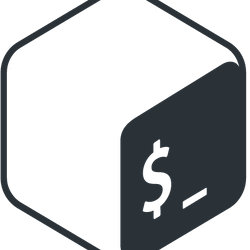
Linux systems are incredibly efficient at managing memory, but sometimes you need to take control and manually clear the cache to optimize performance. Whether you’re troubleshooting memory issues, preparing for system maintenance, or simply want to free up RAM, understanding how to clear cache on Linux is an essential skill for any user or administrator.
In this comprehensive guide, we’ll walk you through everything you need to know about clearing cache on Linux systems. From understanding different cache types to implementing automated solutions, you’ll learn practical techniques that can significantly improve your system’s performance.
Understanding Linux Cache System
What is Cache in Linux?
Think of cache as your system’s short-term memory. When you access files or run programs, Linux stores frequently used data in RAM for quick retrieval. This intelligent caching mechanism dramatically speeds up your system by reducing the need to read data from slower storage devices like hard drives or SSDs.
Linux automatically manages three main types of cache: PageCache for file data, dentries for directory information, and inodes for file metadata. These caches work together seamlessly to ensure your most-used files and system information are readily available in memory.
Why Does Linux Use Cache?
Your system uses cache because RAM is thousands of times faster than traditional storage. When you open a document you worked on yesterday, Linux might already have it cached in memory, making it open instantly instead of waiting for disk access. This intelligent approach means better performance for you and less wear on your storage devices.
However, as your system runs longer, these caches can grow substantially. While Linux is generally excellent at managing memory automatically, there are situations where manual cache clearing becomes beneficial or necessary.
Types of Cache in Linux Systems
PageCache Explained
PageCache represents the largest portion of your system’s cache memory. It stores the contents of files that have been recently accessed, including documents, images, and even parts of applications. When you notice your system using a significant amount of “cached” memory in monitoring tools, you’re primarily seeing PageCache at work.
This cache is particularly effective for users who frequently access the same files. For example, if you’re a developer who regularly opens the same project files, PageCache ensures these files load almost instantly after the first access.
Dentries and Inodes Cache
While PageCache handles file contents, dentries and inodes manage file system metadata. Dentries (directory entries) cache information about file and directory names, while inodes store file attributes like permissions, ownership, and timestamps.
This metadata caching is crucial for system performance. Without it, every time you list directory contents or check file permissions, your system would need to read this information from disk, significantly slowing down operations.
Buffer Cache vs Page Cache
Buffer cache specifically handles block device operations, temporarily storing data being transferred between your CPU and storage devices. While modern Linux systems have largely integrated buffer functionality into PageCache, understanding this distinction helps when using older systems or specific troubleshooting scenarios.
When Should You Clear Cache on Linux?
Signs Your System Needs Cache Clearing
You might need to clear cache when your system shows high memory usage despite having closed applications, when you’re preparing for memory-intensive tasks, or during troubleshooting performance issues. Some users also clear cache before running benchmarks to ensure consistent baseline measurements.
Additionally, if you’re working in development environments where you need to test how applications perform with limited cache, manually clearing cache provides a clean testing environment.
Performance Issues Indicators
Watch for signs like slower file access than expected, applications taking longer to launch, or your system reporting low available memory despite not running memory-intensive programs. These symptoms don’t always indicate a need for cache clearing, but they’re worth investigating.
Remember, high cache usage isn’t inherently problematic. Linux’s philosophy is to use available memory efficiently, so seeing 80-90% memory usage with most being cache is actually normal and beneficial.
Essential Methods to Clear Cache on Linux
Using the Drop_Caches Method
The most common and reliable method involves writing to the /proc/sys/vm/drop_caches file. This kernel interface allows you to specify exactly which cache types to clear without affecting running applications or services.
The beauty of this method lies in its precision. You can clear only PageCache, only metadata, or everything at once, depending on your specific needs. This granular control makes it perfect for both troubleshooting and performance optimization.
Systemctl Commands for Modern Systems
Modern Linux distributions using systemd offer an alternative approach through the sysctl command. This method provides the same functionality as the drop_caches approach but with a more user-friendly syntax that’s easier to remember and type.
The sysctl method also integrates better with system management tools and scripts, making it ideal for automated environments or when working with configuration management systems.
Step-by-Step Guide: Clearing PageCache Only
Command Syntax and Execution
To clear only PageCache, use this command:
sudo sync; echo 1 > /proc/sys/vm/drop_cachesAlternatively, on systemd systems:
sudo sysctl vm.drop_caches=1The sync command is crucial as it ensures all pending write operations complete before clearing the cache. This prevents data loss and maintains system integrity during the cache clearing process.
Verifying the Results
After clearing PageCache, check your memory usage with:
free -hYou’ll notice a significant reduction in the “buff/cache” column and a corresponding increase in “available” memory. This immediate feedback confirms the cache clearing operation succeeded.
How to Clear Dentries and Inodes
Understanding Metadata Cache
Metadata cache clearing becomes essential when working with systems that handle many files, such as web servers, database systems, or development environments with numerous source files. Clearing this cache can help resolve issues with file system operations or free up memory used by outdated metadata.
Specific Commands for Metadata
To clear only dentries and inodes:
sudo sync; echo 2 > /proc/sys/vm/drop_cachesOr using sysctl:
sudo sysctl vm.drop_caches=2This operation is particularly useful when you’ve been working with many directories and files, as it frees up memory used to cache file system structure information.
Comprehensive Cache Clearing: All Types
Complete System Cache Reset
For a complete cache reset, clearing PageCache, dentries, and inodes simultaneously:
sudo sync; echo 3 > /proc/sys/vm/drop_cachesUsing sysctl:
sudo sysctl vm.drop_caches=3This comprehensive approach is ideal for system maintenance, benchmarking, or when you want to completely reset your system’s memory usage patterns.
Safety Considerations
While clearing cache is generally safe, avoid doing it during heavy disk operations or when critical applications are performing intensive file operations. The temporary performance impact as caches rebuild could affect time-sensitive processes.
Always use the sync command first to ensure data integrity. This simple precaution prevents potential data loss from pending write operations that haven’t yet reached the disk.
Managing Swap Space in Linux
What is Swap Space?
Swap space acts as overflow memory when your RAM becomes full. Linux moves less frequently used data to swap, freeing up RAM for active processes. However, data in swap is accessed much slower than RAM, so managing swap effectively impacts system performance.
Clearing Swap Memory Safely
To clear swap space:
sudo swapoff -a
sudo swapon -aThis process temporarily disables all swap partitions, forcing data back into RAM, then re-enables swap. Only do this when you have sufficient free RAM to accommodate the swap data.
Automating Cache Clearing with Cron Jobs
Creating Shell Scripts
For regular cache maintenance, create a shell script:
#!/bin/bash
sync
echo 3 > /proc/sys/vm/drop_caches
echo "Cache cleared at $(date)"Save this as clear_cache.sh and make it executable:
chmod +x clear_cache.shSetting Up Scheduled Tasks
Add to your crontab for daily cache clearing at midnight:
crontab -eAdd this line:
0 0 * * * /path/to/clear_cache.shAutomated cache clearing can be particularly useful for servers or systems that run continuously without regular reboots.
Best Practices for Cache Management
When NOT to Clear Cache
Avoid clearing cache unnecessarily on desktop systems, as it often provides no real benefit and may temporarily slow performance as caches rebuild. Don’t clear cache during backups, database operations, or when running performance-critical applications.
Cache exists to improve performance, so clearing it should have a specific purpose, not be a routine maintenance task for most users.
Production Environment Considerations
In production environments, coordinate cache clearing with maintenance windows. Document the process and monitor system performance before and after to ensure the operation achieved its intended goals.
Consider the impact on users and applications. Some systems may experience temporary slowdowns as caches rebuild, so plan accordingly.
Monitoring Memory Usage
Using Free Command
The free command provides essential memory information:
free -hUnderstanding the output helps you make informed decisions about when cache clearing might be beneficial. The “available” column shows memory truly available for new applications.
Advanced Monitoring Tools
Tools like htop, top, and iotop provide real-time memory usage information. These tools help you understand memory patterns and identify when cache clearing might be appropriate.
For detailed analysis, use /proc/meminfo to get comprehensive memory statistics, including detailed cache information.
Troubleshooting Common Issues
Permission Problems
If you encounter “Permission denied” errors, ensure you’re using sudo correctly:
echo 3 | sudo tee /proc/sys/vm/drop_cachesThis alternative approach uses tee to write with proper permissions when direct redirection fails.
System Stability Concerns
Cache clearing should never cause system instability if done correctly. If you experience issues, ensure you’re using the sync command first and not clearing cache during critical operations.
Performance Impact Analysis
Before and After Comparisons
Monitor system performance before and after cache clearing using tools like time for command execution, iotop for disk activity, and free for memory usage. This data helps you understand the real impact of cache clearing on your specific workload.
Measuring Improvements
Track metrics relevant to your use case: application startup times, file access speeds, or overall system responsiveness. Cache clearing benefits vary significantly depending on your specific usage patterns and hardware configuration.
Alternative Cache Management Tools
Third-Party Solutions
While manual cache clearing works well, some administrators prefer tools like memfrob for memory testing or specialized system administration suites that include cache management features.
GUI-Based Options
Desktop users might prefer graphical tools like GNOME System Monitor or KDE System Activity that provide cache clearing functionality through user-friendly interfaces.
Frequently Asked Questions
1. Is it safe to clear cache on Linux regularly?
Yes, clearing cache is safe and won’t harm your system or cause data loss. However, it’s generally unnecessary to do regularly since Linux manages cache efficiently automatically. Clear cache only when you have specific performance issues or maintenance needs.
2. Will clearing cache improve my Linux system’s speed?
Clearing cache temporarily frees up RAM but may actually slow your system initially as caches rebuild. Long-term speed improvements depend on your specific use case. Cache clearing is more useful for freeing memory for other applications than for general speed improvements.
3. What’s the difference between clearing PageCache and clearing all cache types?
PageCache (echo 1) clears only file content cache, while clearing all types (echo 3) also removes directory and file metadata cache. Use echo 1 for production systems as it’s safer, and echo 3 for comprehensive cleanup during maintenance.
4. Can I clear cache without root privileges?
No, clearing system cache requires root privileges because you’re modifying kernel parameters. You must use sudo or be logged in as root to execute cache clearing commands successfully.
5. How often should I clear cache on my Linux server?
Most Linux servers don’t need regular cache clearing since the system manages memory efficiently. Consider clearing cache only during scheduled maintenance, before performance testing, or when troubleshooting specific memory issues. Daily automated clearing is rarely necessary and may reduce performance.
